The relationship between the media and the LGBTQ+ community
Catalogue
Introduction
How do LGBTQ+ people find identity in media?
Why are LGBTQ-related films are not really mainstream yet?
Why is representation of LGBTQ-related films important in the mainstream?
How does the audience feel about LGBTQ-related media?
Conclusion
References
How do LGBTQ+ people find identity in media?
Video game
LGBTQ+ players may not be able to express themselves in daily life, but they can find their place in the game through more inclusive virtual characters. Video games can create a world where everyone can be themselves. (Brooks, 2021)
Changing environment
In traditional cognition, there are eight categories of art, which are
- Painting
- Sculpture
- Architecture
- Music
- Literature
- Dance
- Drama
- Film
May 10, 2011, “the National Endowment for the Arts will be renaming its “Arts on Television and Radio” program “Arts in Media.” The new program will include grants for video-game creators, as well as for artists who create mobile and interactive platforms.” (National Endowment For The "ARTS", Including Video Games? 2011)
This is tantamount to United State federal recognition of video games as “art,”
The video game became the ninth art.
This is the inevitable result. The universal law of the development of art is to give people a higher sense of the work of art. Games today are pushed to their limits in terms of production quality and budget,
Industry Analyst Michael Pachter estimated the development budget for the Red Dead Redemption 2 was between US$80 million and US$100 million. (Pachter, Red Dead Redemption 2 Cost To Make)
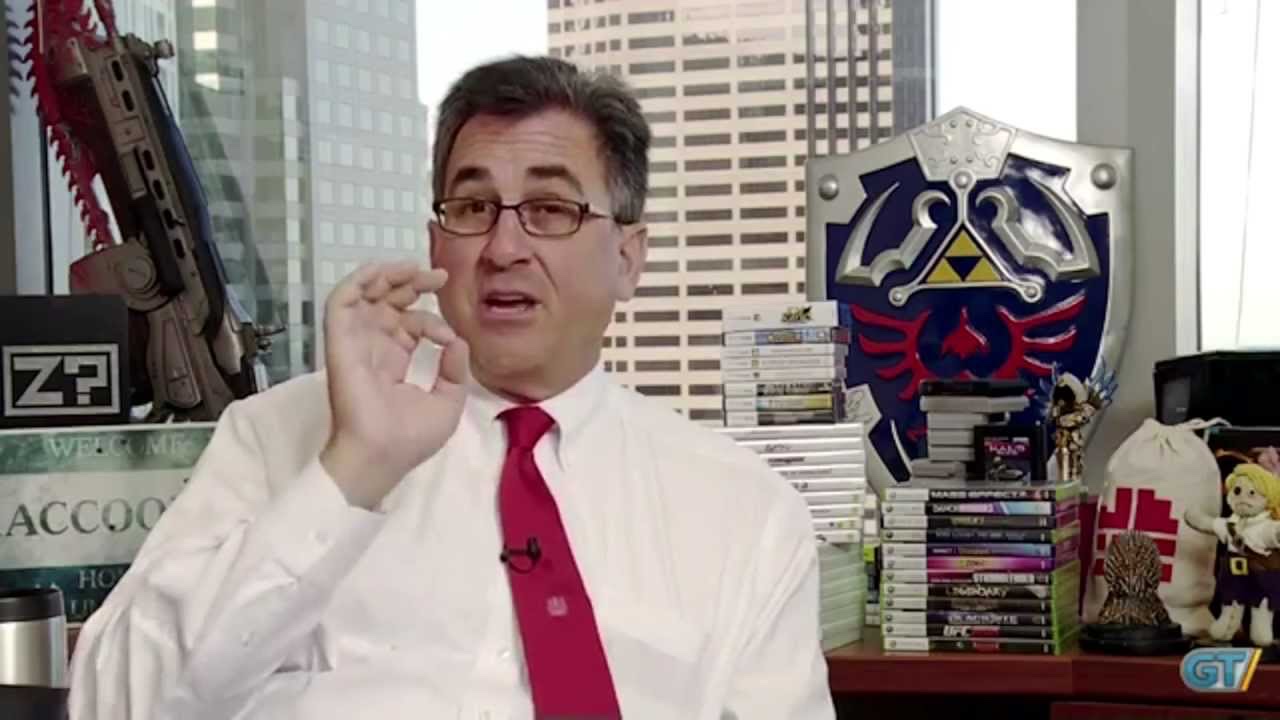
(Michael Pachter, nintendotoday.com)
As the market develops and competition heats up, the game begins to have more demanding audience, carrying more advanced story, and more three-dimensional and diverse characters.
Role Play
Games have a unique advantage over other art forms in that you get feedback on your actions. This in itself is what games were designed for, to be "played", and this advantage has given rise to the largest variety of games today:
RPG Role-playing game
The protagonist Jacob Frye of Assassin's Creed Syndicate, games released by Ubisoft Quebec on November 19, 2015 is a bisexual.
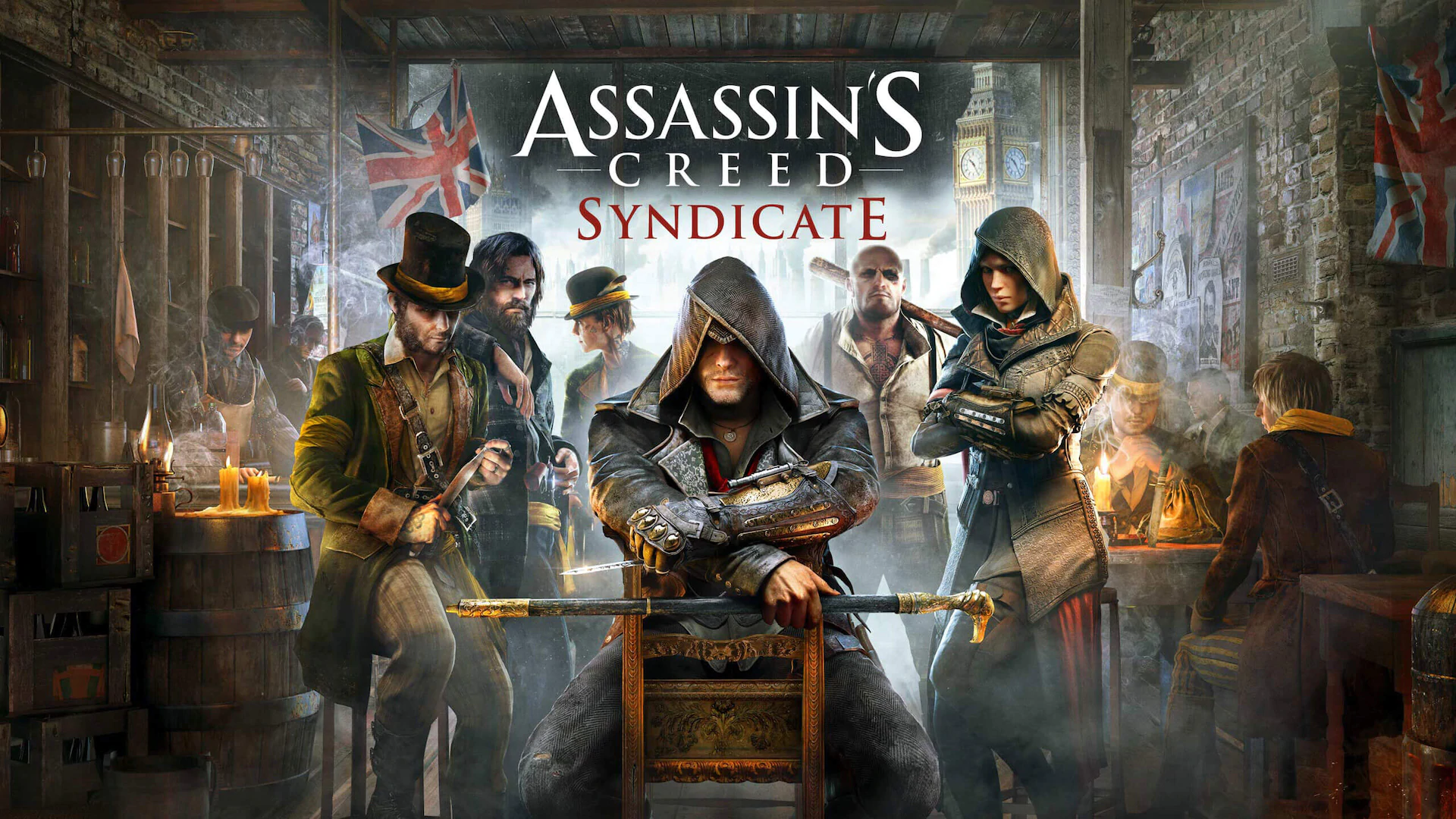
(Assassin's Creed Syndicate, epicgames.com)
And Ellie, The protagonist of Sony’s first party game studio Naughty Dog’s game, The Last of Us Part II, is a lesbian.

(The Last of Us Part II, playstation.com)
In 2007, the Stanford University Department of Communication began studying how the image of virtual characters in games influences gamers. Researchers Nick Yee and Jeremy Bailenson began to observe whether virtual character images affect players' behavior in the game.
In the experiment, players first ranked the character images according to their attractiveness. Each person was then assigned a character and talked to each other in a virtual scenario. The study found that players with more attractive personas behaved more confidently in their interactions, such as being more willing to approach other characters in the VR environment, or being more proactive in introducing themselves and inviting others to chat. (Brooks, 2021)
Games give players a chance to express themselves, which may help LGBTQ+ people become more confident in their lives. This phenomenon is known as the “Proteus effect”. The name comes from the Greek myth of a sea god who known for his ability to shape-shift.
If more LGBTQ+ role models emerged from all sectors of society, the LGBTQ+ community would feel more comfortable with their gender identity, a demand that can be met in video games because video game creators can create these types of characters and give players the ability to play a role.
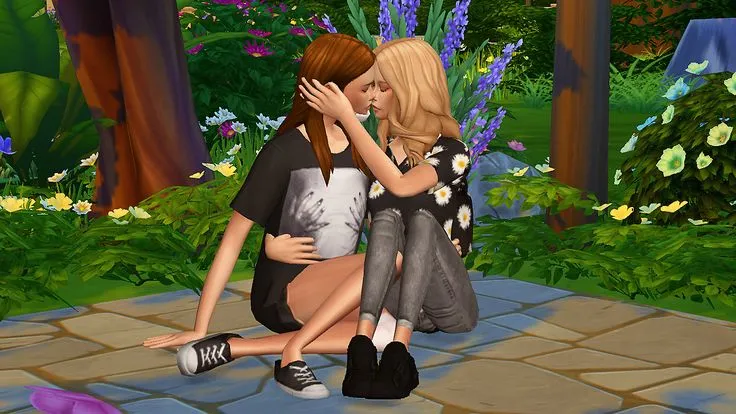
('Lesbian Pose Packs’ in The Sims, pinknews.co.uk)
Fictional Novels
All adolescents inevitably grow up with objects to emulate. In other words, role models.
But for the LGBTQ+ community, finding a role model is difficult. Early on, they even grow up with criticism and negative opinions.
.png)
(AJR - Role Models, youtube.com)
Fictional novels provide a medium in which young people can find the same characters with LGBTQ+ characteristics. They can read the book and identify with the characters.
In a sample of 126 LGB young adults, the Internet and books were found to be the most influential media sources, although television and magazines were important as well (Gomillion & Giuliano, 2011)
Positive character role models are important to the identity development of LGBTQ+ youth, and fiction is an important source of these character role models, but characters in LGBTQ+ fiction still have a tendency to be portrayed as tending toward highly emotional stereotypes. Grief, depression, emotional struggles, and even suicide remain staples of these works. Put another way, these gay novels are not "love stories where the characters are gay," but rather "gay love stories. It is also common to see same-sex couples appearing in novels in which one partner is portrayed as more masculine and one as more feminine.
The reason for this may be that a large percentage of LGBTQ+ authors are actually heterosexual themselves, and even if they are not discriminating or biased, they may be writing such content with more or less of a curiosity in mind. The only way to solve the problem is to encourage more LGBTQ+ authors to emerge and give a voice to this community.
Why are LGBTQ-related films are not really mainstream yet?
Movie industry
Most film production teams seem to be more focused on making a "Homosexual movie" that appeals to heterosexuals. Commercial interests drive the inclusion of LGBTQ elements to satisfy people's curiosity. At the same time, as society develops and acceptance increases, more and more people no longer consider non-binary sexuality a disease.
As a result, more of the LGBTQ community is choosing to embrace their identity and be open about it. So this is a two-sided topic. One side is that the studios are creating films on LGBTQ topics to interest and generate revenue from people who are curious about the topic.
Critics Trish Bendix raises a question, "Did they adequately do marketing and outreach to core groups interested in the film?”(Bendix, 2018)
The answer may be not quite.
After poor sales in 815 theaters nationwide, Call Me By Your Name was taken out of more than 230 theaters in its second weekend of wide release, signaling that "Sony is somehow not doing right by the film which has been widely well-received by critics and fans alike."(Bendix, 2018)

(Call Me by Your Name, 2017)
On the other hand, studios don't really care about the opinions of LGBTQ+ people, and the decisions they make are largely based on financial considerations only. Although more film makers are willing to make this type of film, the profits that a company could get are usually less than average. This is definitely unacceptable for most companies because their initial purpose was to attract more audience by these new kind of movies, not for LGBTQ+ people. That is the reason why "Call Me by Your Name" has been taken down.

(Call Me by Your Name, 2017)
These LGBTQ+ people are gradually becoming more and more acceptant as society develops, especially in movie industry. However, this type of film could not be the mainstream since a lot of countries still shows little tolerance towards this group of people. We believe the target audience of this movie should not be just LGBTQ+ people and there must exist people who are interested in this type of film only because they want to know more about this minority group and try to understand them. Moreover, film is a good way of expressing LGBTQ+ identity to the audience. Although this kind of movie still have a long way to go in order to become mainstream, we think the increasing number of this kind of film is encouraging for most people in the LGBTQ+ group.
Why is representation of LGBTQ+ films important in the mainstream?
Film
Amid the sun-drenched splendor of the setting, Elio and Oliver discover the heady beauty of awakening desire over the course of a summer that will alter their lives forever.
That’s the story of Call Me by Your Name, the film by Luca Guadagnino. A sensual and transcendent tale of first love, based on the acclaimed novel by André Aciman.
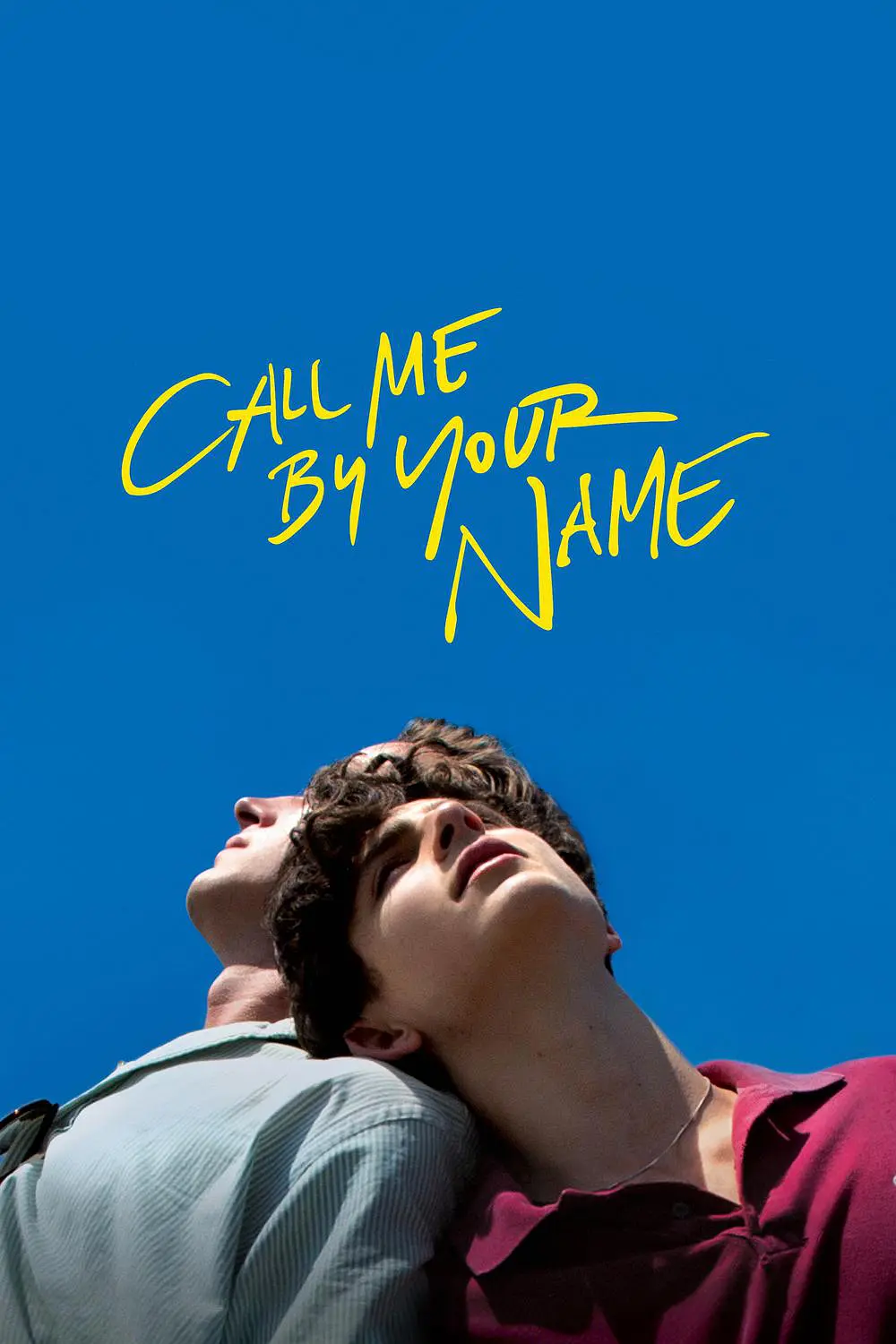
(Call Me by Your Name, 2017)
Call Me By Your Name won the 90th Academy Awards for Best Adapted Screenplay and the Gotham Independent Film Awards, but the gross box office revenue is only 41.9 million U.S. dollars, a very mediocre market performance.
It’s Rotten Tomatoes score were 96%, with nearly 40,000 reviews, and a score of 9.1 on Douban, better than 99% of gay movies and 98% of love stories. These figures attest to the quality of the film itself
The commercial performance of the film does not match its quality.
The characters in this film do not deliberately create the image of homosexuality, but show a natural relationship without pathological and extreme elements. The audience can not stick to the homosexuality setting, but ignore the gender and simply feel the emotional fetters between the two people.
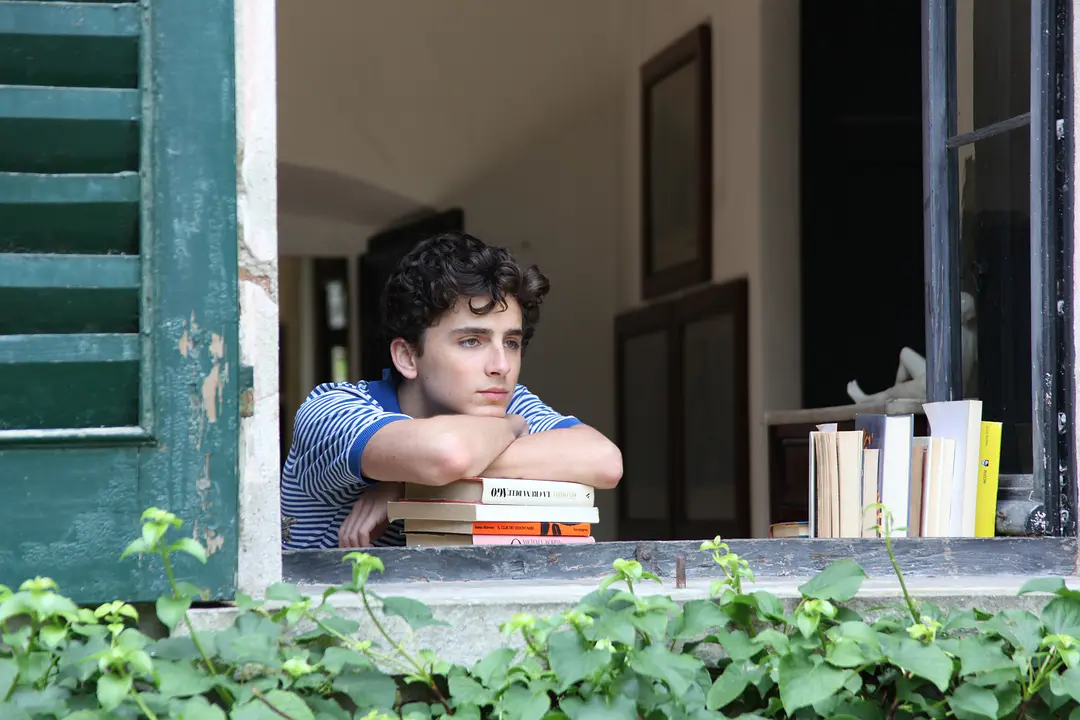
(Call Me by Your Name, 2017)
Director Luca Guadagnino himself is a homosexual, which is why this film is not a commercial film deliberately adding homosexual elements, but a natural love film. The ambiguity before love, the warmth after love and the bitterness of parting are the same regardless of gender. This work shows these plots without any prejudice.
The same thing happened in the west of Wyoming. The silent farmer Ennis and the cheerful cowboy Jack met each other. They took a taboo step, fell deeply in love with each other, but were forced to have different families of their own.
When it comes to LGBTQ+ movies, Ang Lee's Brokeback Mountain is a mountain on flim history that can't be avoided. As Ang Lee's classic work, and the actor of one of the protagonists Heath Ledger, who became extremely famous after plays the role of the Joker in Batman Dark Knight Series, Brokeback Mountain has become a synonym for homosexuality to a certain extent, and its status is beyond doubt.
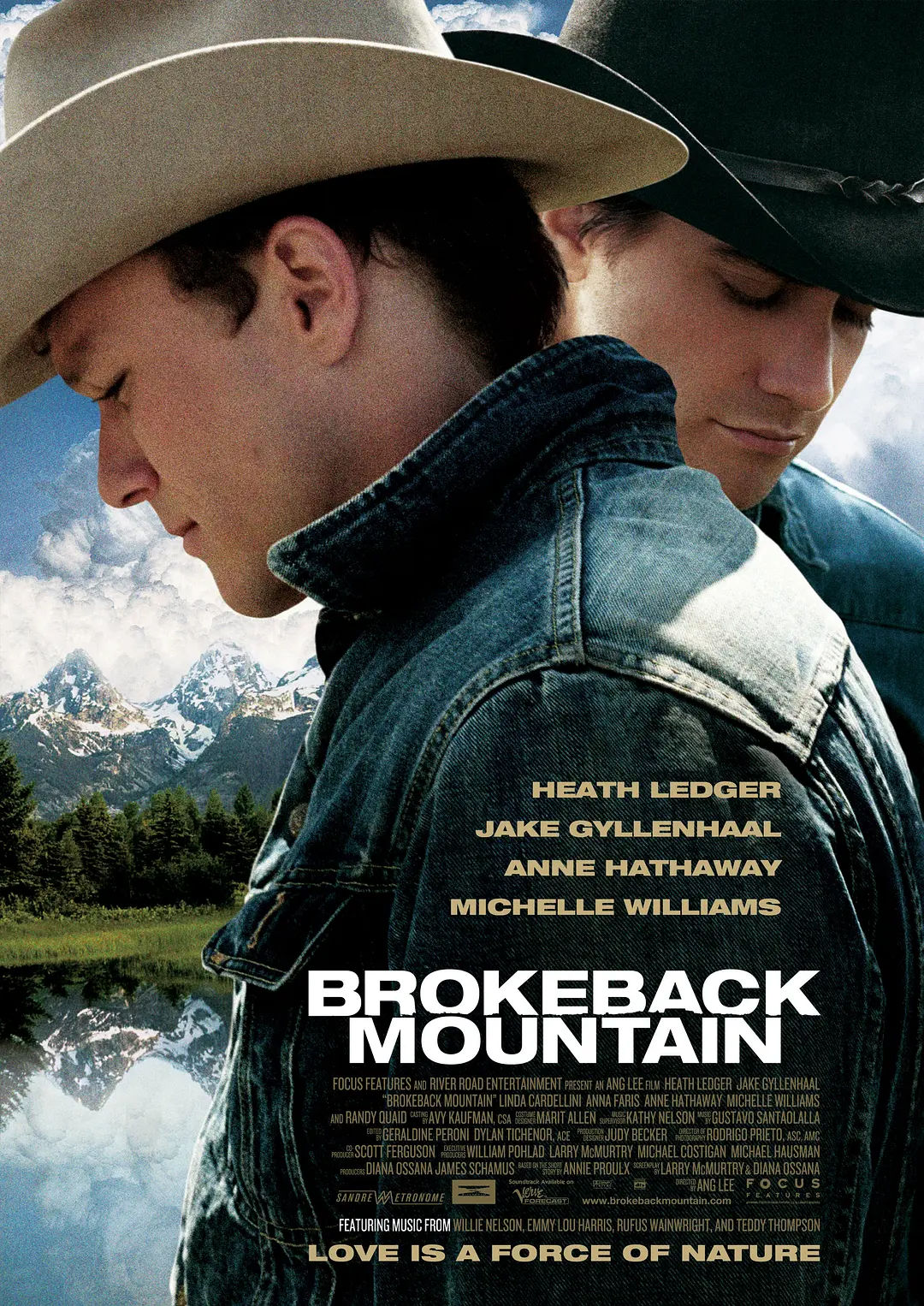
(Brokeback Mountain, 2005)
The story of Brokeback Mountain takes place at a time when society was far less tolerant of LGBTQ + than it is today. In the secular high pressure, but to make the role of repression in the heart of the feelings of the more violent eruption. The contrast between the trepidation of hiding secrets in everyday life and the wildness of the exposed self is starkest.
The secret of Brokeback Mountain's success is nothing more than a great love story with no gender preference, but it still indirectly affects Americans' views on homosexuality.
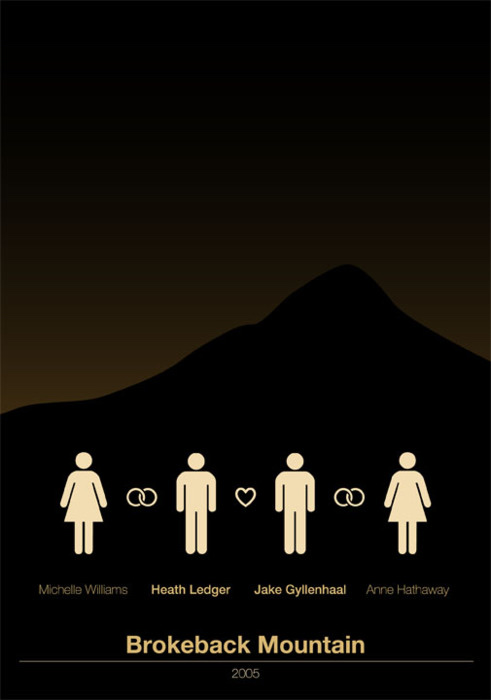
(Brokeback Mountain, 2005)
In 2008, five states in the United States legally recognized same-sex marriage, just three years after the film was released.

(Brokeback Mountain, 2005)
At the beginning of the 1990s, gay and lesbian teenagers were two to three times more likely to commit suicide than heterosexual teenagers, and homosexual teenagers account for 30 percent of all adolescent suicides. Homosexual identity formation could be less traumatic, however, if some explanation or rationalization of the adolescent’s feelings and behavior is provided (Siebler, 2010)
For a long time, LGBTQ+ groups have been ignored or demonized in all kinds of media. Nowadays, we have Gaystreaming TV stations like LOGO, A television station that specializes in providing LGBTQ+ content.
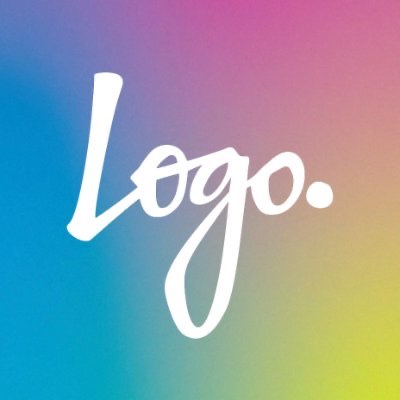
(Logo TV, logotv.com)
Furthermore, another remarkable achievement is gay movie Moonlight beat music movie La La Land at the Academy Awards ceremony and won the Oscar.
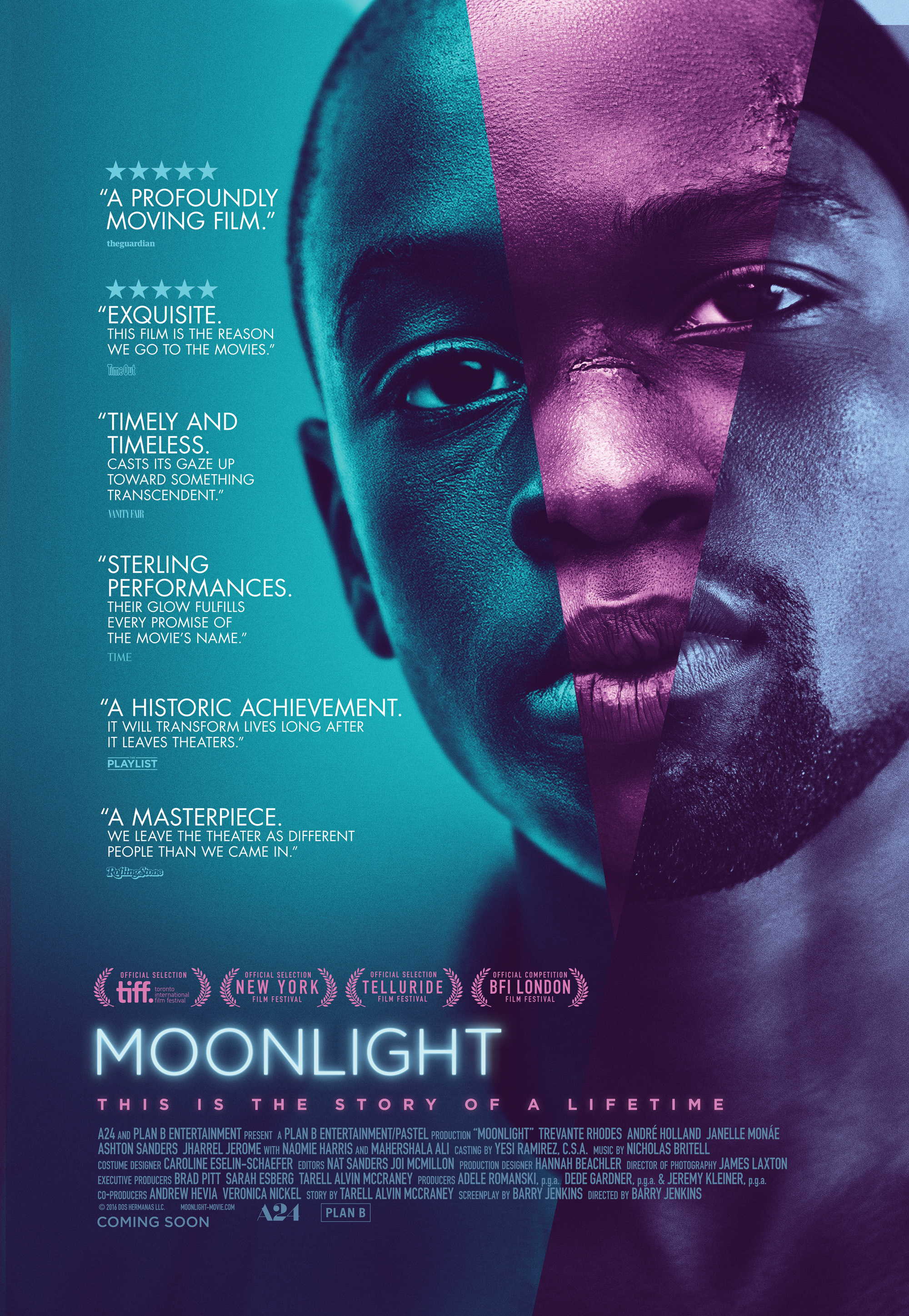
(Moonlight, 2016)
These examples shows that LGBTQ + films are gradually entering the mainstream film market, such a change challenges existing social and economic structures but also highlights the normality of homosexuality.
How does the audience feel about LGBTQ-related media?
Different audiences
We can divide the audience for LGBTQ-themed artworks into two parts. One segment is those who recognize LGBTQ people or are interested in LGBTQ culture. The other part of the audience is those who for some reason do not identify with or accept LGBTQ people. At the same time, there are many factors that influence the perception of a population as a whole, such as the influence of the government and the degree to which people are aware of new things.

Considering about the government, government attitudes toward minorities can greatly influence how they are perceived, and censorship can influence whether people are homophobic. These points to the need to examine the originating forces of state homophobia and the extent to which the state selects for the nonexistence of homophobic practices and discourses or disproportionately exists in relation to the demands of sexual minorities. Indeed, in places where sexual minorities are unorganized or poorly organized, the choice of state actors, their allies and agents, may be to do nothing.
This is because of political, cultural, and other influences. That precedes sexual minority political organizing. This phenomenon compels us to ask, absent the need to treat any actual "symptoms" of alleged homosexual infection, why states succumb to a political Munchausen Syndrome by proxy? And that’s relate on human rights issues for LGBTQ people.
"My approach to the globalization of LGBTQ identities is predicated on five interventions related to a hypothesis of convergence around human rights. First, convergence itself is best applied to state homophobia, though significant local differences remain related to variations in state capacity and governing coalitions, challenges to the state, as well as culture and history. These differences shape possible responses among sexual minorities, so that universal LGBTQ identities adapted from a US model by either state actors or sexual minorities are always somewhere over the rainbow."(Bosia,2013)
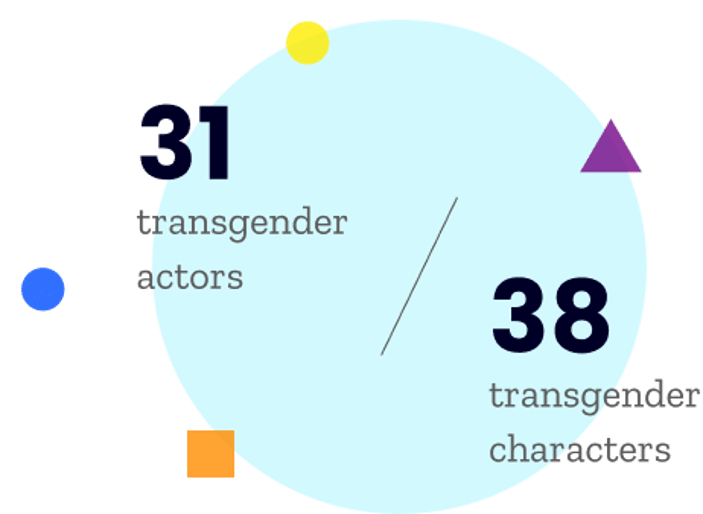
History
Similarly different generations have different views of LGBTQ people. The following section will mention the understanding and perception of LGBTQ works in the 1980s. This will help us better understand how people's perceptions have progressed and how society as a whole has changed dramatically in regards to LGBTQ people today compared to the 1980s.
"Until the late 1980s, homosexuality was still depicted in films as confused people who did not conform to their gender identity. These marginalized characters showed young audiences what would happen to those who deviated from the heterosexual order. Negative examples were shown to the audience. Queers were often (mis)represented in cinema as confused youth who did not conform to their gender identity; boys who were not manly men and girls who were not womanly women. The transgressive protagonists were verbally and/or physically bullied by their classmates and teachers; they were often neglected by peers and families, being left to face exclusion and guilt." (Russo, 1981)
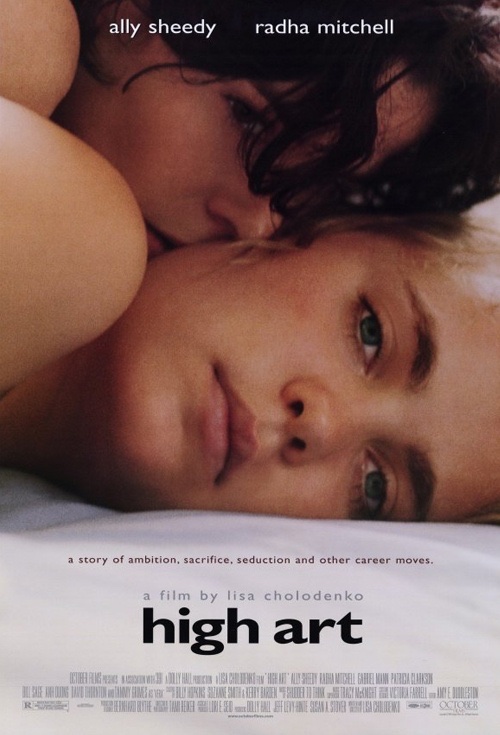
(High Art, 1998)
These marginalized characters show young audiences what will happen to anyone who deviates from the sexual order. The protagonist's homosexuality is rarely discussed. Instead, it is portrayed as a variety of gender anxiety disorder. "For example, Vincent Minnellis Tea and Sympathy(USA 1956) presents Tom, an effeminate student in a boarding school, who is more sensitive and delicate than his abusive school-mates. At the end, older (and married) Tom visits his old school, and his sissy is understood as having been nothing more than a phase." (Russo, 1981)
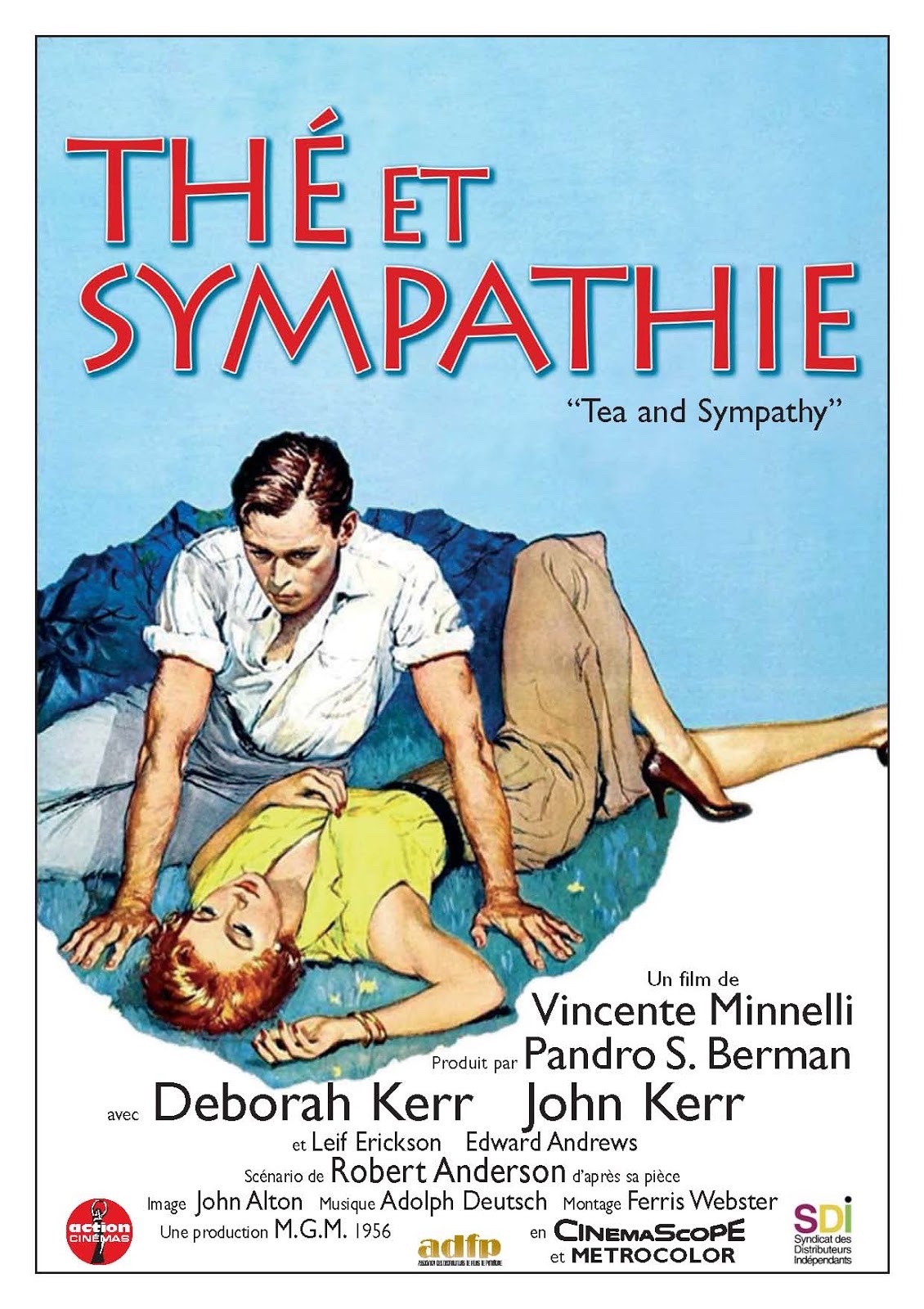
(Tea and Sympathy, 1956)
Reference
- Bendix, T. (2018, January 31). Mainstream LGBTQ Movies Are Failing Because Studios Aren't Reaching The LGBTQ Community. INTO. https://www.intomore.com/culture/mainstream-lgbtq-movies-are-failing-because-studios-arent-reaching-the-lgbtq-community/.
- Staples, L. (2019, December 26). Did culture really embrace queer people this decade? BBC Culture. https://www.bbc.com/culture/article/20191218-the-decade-that-saw-queerness-go-mainstream.
- Ng, Eve (2013). A “Post-Gay” Era? Media Gaystreaming, Homonormativity, and the Politics of LGBT Integration. Communication, Culture & Critique, 6(2), 258–283.doi:10.1111/cccr.12013
- Siebler, K. (2010). Transqueer Representations and How We Educate. Journal of LGBT Youth, 7(4), 320–345. doi:10.1080/19361653.2010.512521
- Bosia, Michael J. (2014). Strange Fruit: Homophobia, the State, and the Politics of LGBT Rights and Capabilities. Journal of Human Rights, 13(3), 256–273. doi:10.1080/14754835.2014.919217
- Padva, Gilad (2008). Media and Popular Culture Representations of LGBT Bullying. ,19(3), 105–118. doi:10.1080/10538720802161615
- Brooks, L. (2021, March 24). How Video Games Can Help LGBTQ+ Players Feel Like Themselves. Retrieved April 06, 2021, from https://www.washingtonpost.com/video-games/2021/03/23/lgbtq-representation-video-games/
- Cook, Jennifer R.; Rostosky, Sharon S.; Riggle, Ellen D. B. (2013). Gender Role Models in Fictional Novels for Emerging Adult Lesbians. Journal of LesbianStudies, 17(2), 150–166. doi:10.1080/10894160.2012.691416
- National Endowment For The "ARTS", Including Video Games? (2011, May 10). https://itsartlaw.org/2011/05/10/national-endowment-for-the-arts-including-video-games/.
- Gomillion, S. C., & Giuliano, T.A. (2011). The Influence of Media Role Models On Gay, Lesbian, and Bisexual Identity. Journal of Homosexuality, 58, 330–354.